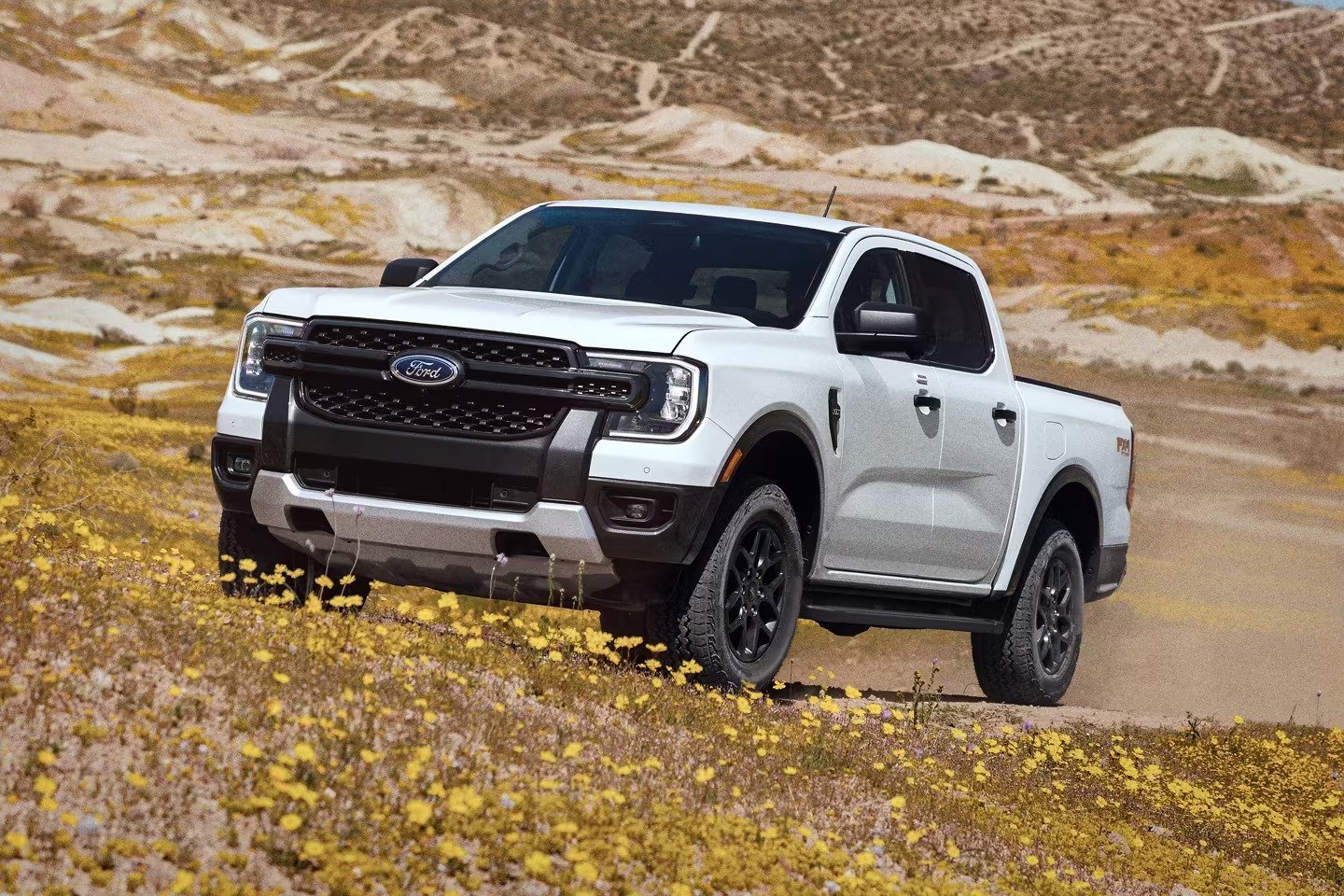The beauty of owning a truck—especially a Ford truck—often lies in its promise: the sense that no matter the season, the load, or the road ahead, you’ll have a vehicle that’s ready when you are.
For decades, Ford has proudly worn the crown as America’s truck leader, boasting best-seller status with the F-Series and dominating work sites, farms, and family garages alike.
With rugged styling, proven powertrains, and a strong heritage of hard work, Ford has cultivated a deeply loyal customer base that values durability, muscle, and dependability above all else.
But while many Ford trucks live up to their marketing slogans and blue-oval legacy, others don’t. In fact, in the used truck market, especially when dealing with high-mileage models or older generations, starting reliability becomes a revealing test that separates truly great trucks from deeply flawed ones.
Let’s be honest: nothing crushes the morning routine or confidence in your vehicle quite like turning the key (or pressing the button) and hearing… nothing. Or worse—a drawn-out crank, a rough idle, or a warning light that signals a deeper ignition issue.
For some unlucky owners, ignition problems aren’t one-off quirks but persistent demons that suck time, money, and patience dry. Whether it’s spark plug disasters, finicky glow plugs, failing sensors, or overly complex electronic systems, not all Ford trucks can be trusted to start every time. And in a vehicle designed to be your go-to partner through thick and thin, that’s a major betrayal.
On the flip side, when a Ford truck does start without hesitation, day after day, year after year, it earns a different kind of respect. Certain models, powertrains, and production years have proven themselves nearly bulletproof in this regard, with ignition systems that just don’t quit.
These are the trucks that keep contractors on the road, parents on time, and adventurers moving forward. In the used market, they’re the smart buys—the models with a reputation not just for reliability in general, but for starting reliability in particular, which is arguably the most essential trait of all.
In this guide, we’re diving deep into both sides of that equation. We’ve identified five Ford trucks—spanning multiple decades and engine types—that are known to start every time, no matter the conditions or the odometer reading.
These are the unsung heroes of Ford’s lineup, vehicles that deliver consistency where it counts. But we’re also pulling back the curtain on five Ford trucks that are notorious for their ignition nightmares—trucks that may look solid from the outside but routinely leave their owners stranded or frustrated.
Whether you’re shopping the used market, troubleshooting your current truck, or just trying to avoid a mechanical money pit, this breakdown will give you the real-world insight you need.
Not all trucks are created equal, even within a storied brand like Ford—and when it comes to starting reliability, you deserve to know the difference between a dependable daily companion and a driveway diva.
Also Read: 5 Kia Models That Surprise With Longevity And 5 That Fail Early
5 Ford Trucks That Start Every Time
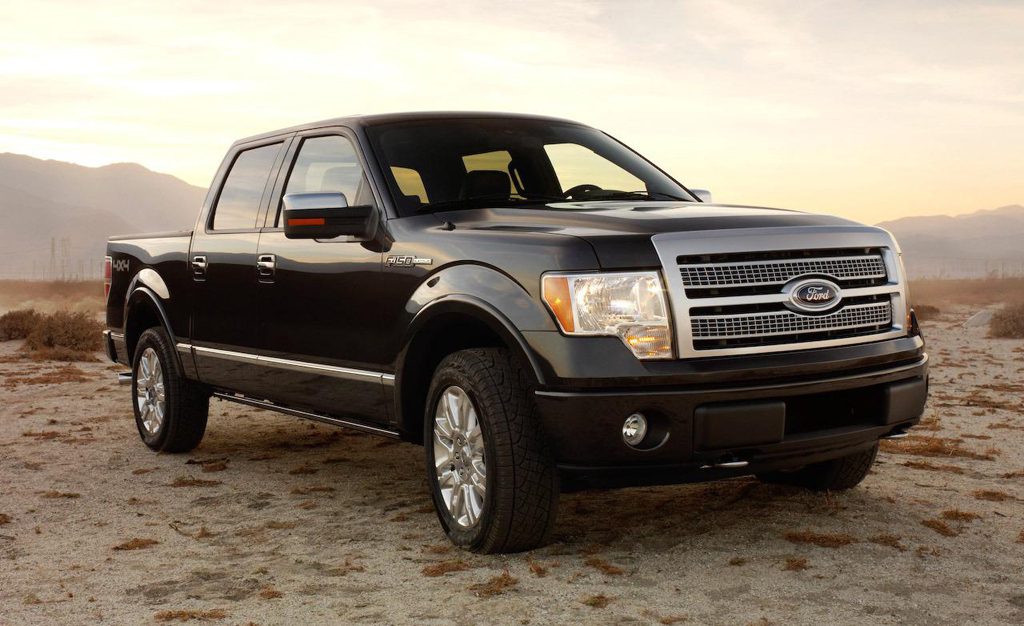
1. 2009–2014 Ford F-150 (5.0L V8 or 3.5L EcoBoost)
Among the most respected full-size trucks on the used market today, the 2009–2014 Ford F-150 represents a sweet spot where modern engineering meets old-school durability.
Specifically, the trucks equipped with the 5.0L Coyote V8 or the 3.5L EcoBoost V6 are standout performers, not only in towing and power delivery but in everyday dependability, starting reliability included.
The ignition systems in these trucks were refined over the years and rarely exhibit the software gremlins or electrical issues that plague other high-mileage trucks. The 5.0L Coyote engine, in particular, is praised for its mechanical simplicity and long-lasting components.
The coil-on-plug ignition layout is durable, the spark plugs are accessible and long-lived, and the engine management system is relatively free from critical bugs. When properly maintained, these trucks fire up instantly in all weather conditions, hot or cold, thanks to solid battery and alternator setups and a fuel delivery system that holds up well even past 150,000 miles.
What further cements the F-150’s status in this era as a consistent starter is its electronic system’s relative simplicity compared to newer models. Push-button start was not yet ubiquitous, and the standard keyed ignition or reliable switch-based push-starts were rock solid.
Many fleet operators and individual owners alike have commented on how even with minimal upkeep, these trucks continue to offer rock-solid starting behavior day in and day out.
The PCM (powertrain control module) and body control modules are robust and not prone to communication faults or electrical shorts. If you want a used full-size truck that you can count on every morning without a second thought—and one that’s relatively easy to diagnose if a problem ever does occur—this generation of F-150 is one of the most trustworthy options out there.
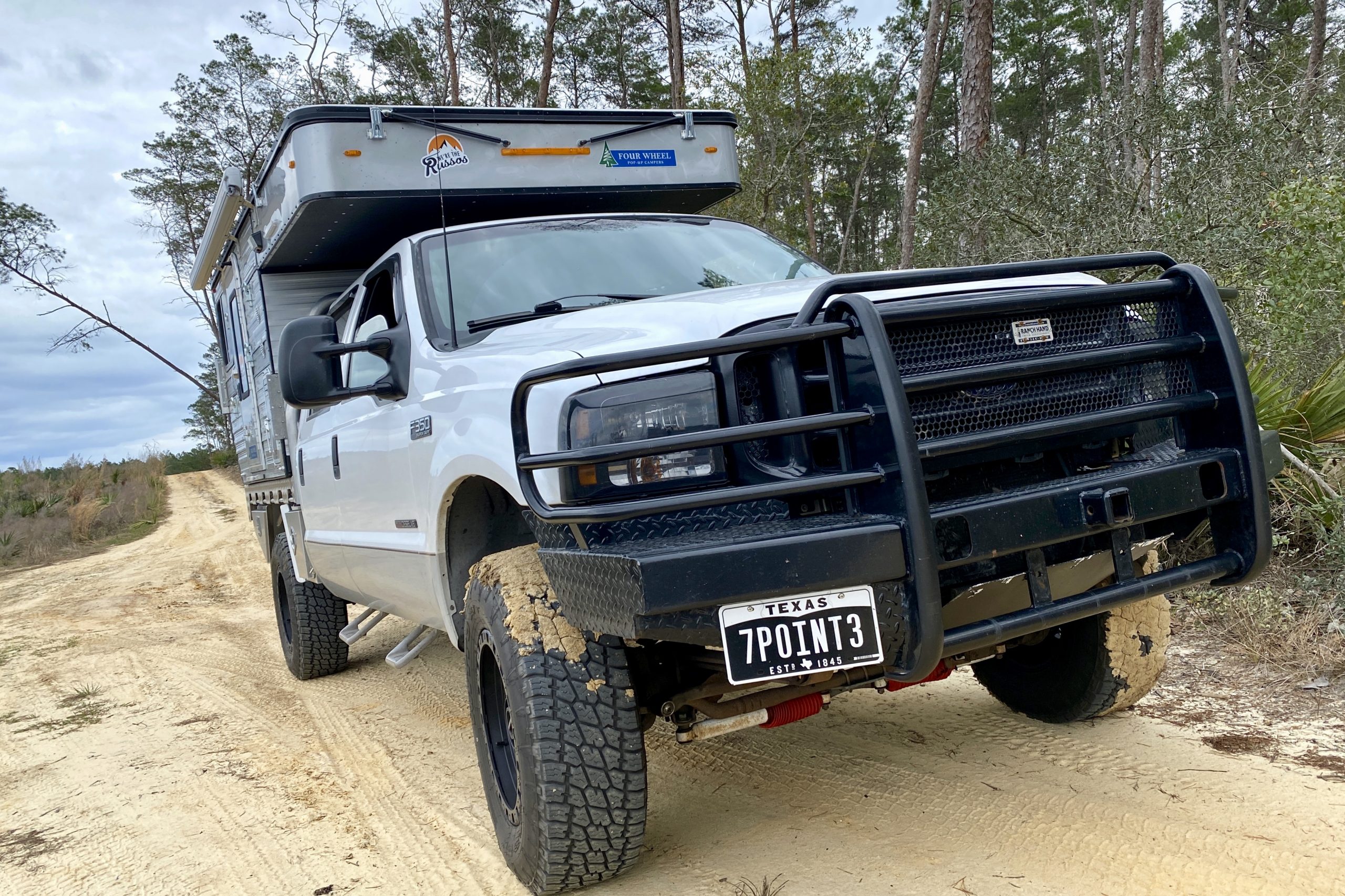
2. 1999–2003 Ford Super Duty (7.3L Power Stroke Diesel)
The 7.3L Power Stroke diesel engine, found in Ford Super Duty trucks from 1999 to 2003, remains a legend not only for its sheer torque and durability but for its uncanny ability to start reliably no matter what.
In a time before emissions controls and electronic complexities muddied the waters of diesel ownership, this truck stood tall with a mechanical fuel injection system that just works.
Owners in northern climates frequently testify to the 7.3L’s dependability even in sub-zero temperatures—when properly equipped with working glow plugs and strong batteries, this diesel will crank over with no hesitation. In an age when modern diesels can take multiple attempts to start and often suffer from sensor-related failures, the 7.3L stands out for its robustness and simplicity.
There’s no DEF system, fewer sensors to go haywire, and a mechanical mindset baked into the truck’s bones that ensures it runs even when conditions aren’t ideal.
Another strength of the 7.3L Super Duty is its excellent serviceability and diagnostic predictability. If something does start to go wrong, it’s usually something straightforward like a worn glow plug relay or a battery nearing the end of its life—easy to test and inexpensive to replace.
Ford paired this engine with a stout starter, durable wiring harness, and minimal digital intervention, so fewer things can go wrong in the starting process. As a result, many owners are still using these trucks for daily work duties even two decades after they rolled off the lot.
Whether it’s sub-zero winters, rural work sites, or just daily commutes, the 7.3L is one of the most dependable Ford engines ever made—and it’s a cold-start champion.
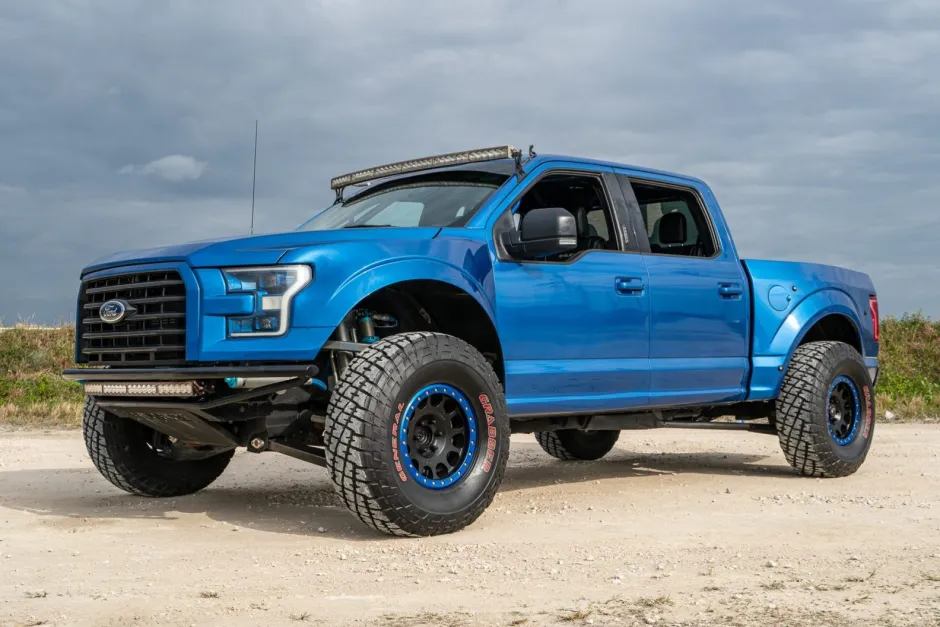
3. 2015–2020 Ford F-150 (5.0L V8 or 3.5L EcoBoost)
Ford’s move to an aluminum body with the 2015 redesign of the F-150 grabbed headlines, but what really matters to everyday owners is that the truck continued to start and run without fail.
These years introduced more advanced ignition technologies, including intelligent access keys and push-button start, but unlike many competitors, Ford managed to execute the system with few flaws.
The ignition modules, key sensors, and engine control units in these trucks were well-integrated and not particularly prone to failure, even after years of use. Combined with improved starter motors, upgraded alternators, and revised fuel delivery systems, these trucks almost always come to life with a single push, even in cold, humid, or dusty conditions.
The 5.0L Coyote engine continues to be a beacon of simplicity and dependability, while the updated EcoBoost V6s gained refinement in their ignition logic and throttle responsiveness, eliminating many of the early-year issues from prior versions.
Where this generation truly shines is in its ability to combine technology and reliability without overwhelming the system. Remote start systems are standard or optional on most trims, and they work as intended without the frequent pairing or signal failures seen in other brands.
Battery drain issues are minimal, even in trucks loaded with tech, and the vehicle’s self-check systems are quick to alert the owner to small problems before they cascade into full-blown no-starts.
Ford’s network of sensors, relays, and ignition control systems during these years is among the most reliable in the industry, particularly in the non-hybrid configurations. If you’re looking for a modern truck that starts with the reliability of a 1990s model but has the tech and comfort of a 2020 vehicle, this is the sweet spot.
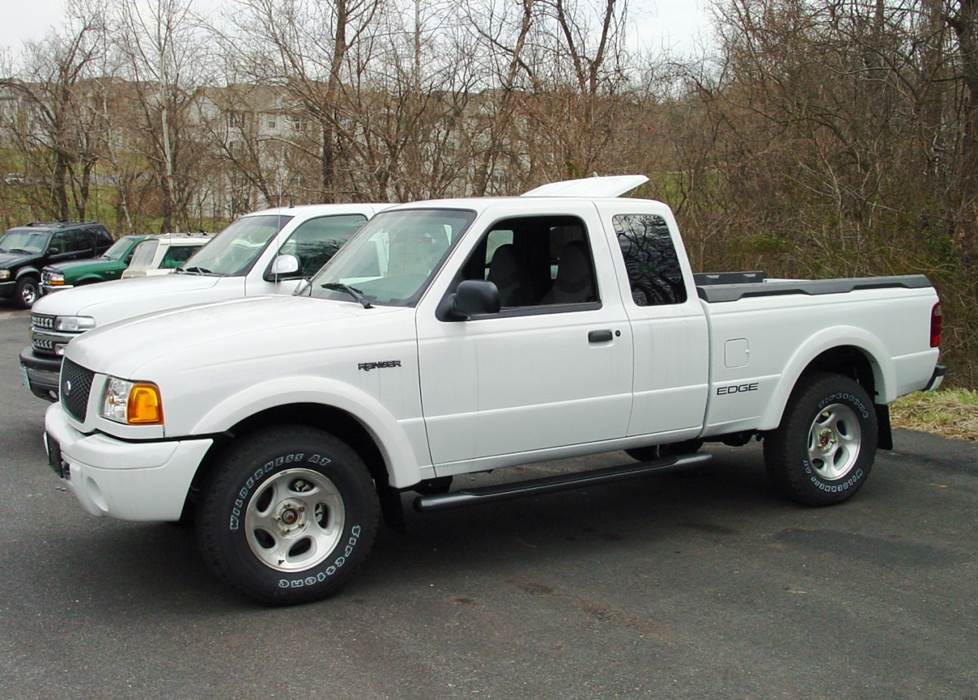
4. 2004–2008 Ford Ranger (2.3L I4 or 3.0L V6)
The mid-2000s Ranger might be one of the most underappreciated trucks Ford ever made, particularly when it comes to reliability and starting consistency. Built on a tried-and-true platform that emphasized simplicity over flash, this Ranger featured engines that were among the most maintenance-friendly in the industry.
Both the 2.3L inline-four and the 3.0L Vulcan V6 had reputations for durability, and just as importantly, their ignition systems were straightforward and dependable.
Traditional keyed ignition, robust coil packs, and durable spark plugs meant that starting the truck was a no-fuss process in nearly any situation. The ignition switches in these trucks were physically durable and rarely failed, a stark contrast to some of the more electronically dependent systems in today’s vehicles.
Owners routinely report Rangers that continue to start immediately even after sitting for weeks. The electrical systems are minimalistic, meaning fewer parasitic drains and fewer complications from aging ECUs or immobilizers. For rural drivers, off-roaders, or anyone who just needs a truck that will start in the morning and do its job, this Ranger generation is about as bulletproof as it gets.
The simplicity of the starting system is its greatest strength—no smart keys to fail, no fobs to reprogram, just an ignition that turns over like it was designed to do. Whether you’re running errands, towing small loads, or exploring forest trails, you’ll appreciate the predictability of a truck that’s never hesitant to wake up.
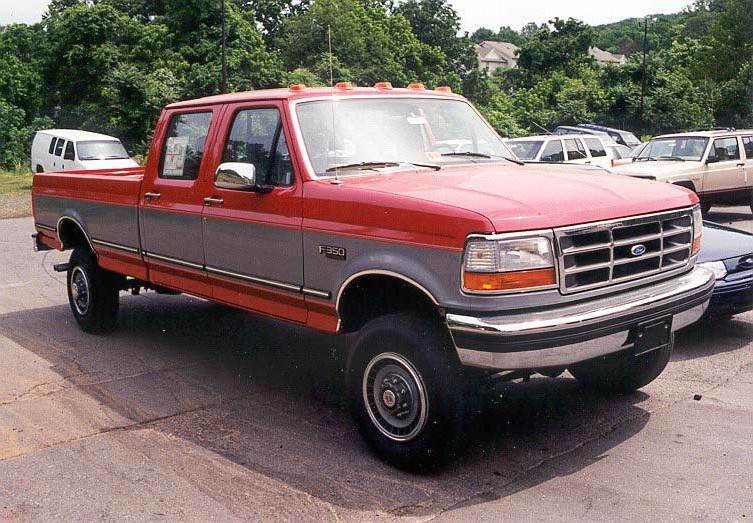
5. 1992–1996 Ford F-150 (4.9L Inline-6)
When people talk about indestructible engines, the 4.9L inline-six found in early 90s F-150s is usually near the top of the list. This engine wasn’t fast or fancy, but it was a masterpiece of reliability and mechanical grace.
These trucks were built before electronic overcomplication became standard, and it shows—in the best way possible. The ignition system is simple: a key, a starter, a coil, and wires that connect directly to a time-tested distributor.
There are no push-button starts to glitch out, no immobilizers to fail, and no software layers between you and your engine. As a result, these trucks are often still found on farms, job sites, and even daily driving around town, starting faithfully each morning with nothing more than a turn of the key.
Maintenance on the 4.9L is easy and cheap. Spark plugs and wires can be replaced in a Saturday afternoon with basic tools. The starter motor is easy to access, and electrical issues are rare thanks to the straightforward wiring harnesses of the era.
Even with 200,000+ miles, many of these trucks remain dependable, not because they were overbuilt, but because they were built right.
These trucks are beloved in enthusiast circles for good reason: they represent the last of an era where a pickup could be both a workhorse and a mechanical companion you could rely on without question. If you want a used Ford truck that starts with the same determination as it hauls, this vintage F-150 is a classic that still gets the job done, no matter how many winters it’s survived.
5 Ford Trucks With Endless Ignition Issues
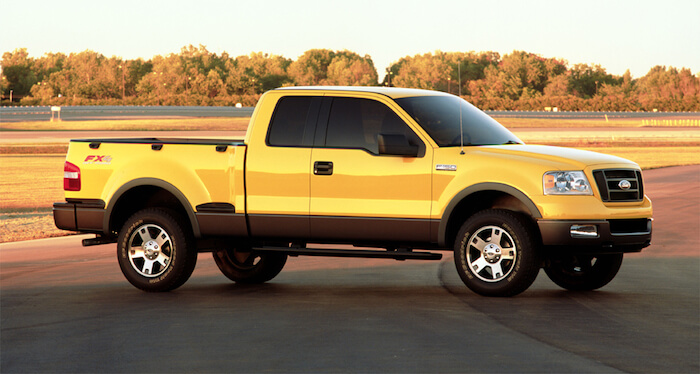
1. 2004–2008 Ford F-150 (5.4L Triton V8)
The 2004–2008 Ford F-150, especially those equipped with the 5.4L Triton V8, has unfortunately become notorious in Ford’s lineup, not just for general reliability concerns, but for a deeply frustrating pattern of ignition-related failures that plague both owners and mechanics alike.
The most well-documented issue lies with the spark plug design: these engines use a two-piece plug that’s prone to snapping off during removal, often leaving the lower half stuck inside the cylinder head. Removing the broken plug can require hours of labor, specialty tools, or even a head replacement in extreme cases.
Many owners have spent thousands of dollars trying to complete a “simple tune-up,” only to end up with seized plugs, broken tools, and hefty shop bills. Worse yet, once the spark plugs do go bad, which they often do around 60,000 to 90,000 miles, the resulting misfires lead to rough starts, hesitation, and no-start conditions that can make daily driving stressful and unpredictable.
But the problems don’t end at the plugs. The ignition coil packs on these engines are notoriously weak and tend to fail prematurely, especially when exposed to moisture. Once one coil fails, it often leads to a cascade of failures across other cylinders.
This results in erratic cranking, long start times, or even stalling shortly after ignition. Add to this the widespread cam phaser and timing chain issues—where the timing mechanism loses synchronization due to stretched chains and faulty tensioners—and you have a recipe for ignition disaster.
These trucks often sound like diesel engines when they crank, and many owners describe a “clattering” noise on startup that signals deeper mechanical issues waiting to surface.
While the F-150’s body and frame are solid, the complexity and fragility of the ignition system in this generation render it one of the most frustrating to own if dependable, consistent starting is your priority.
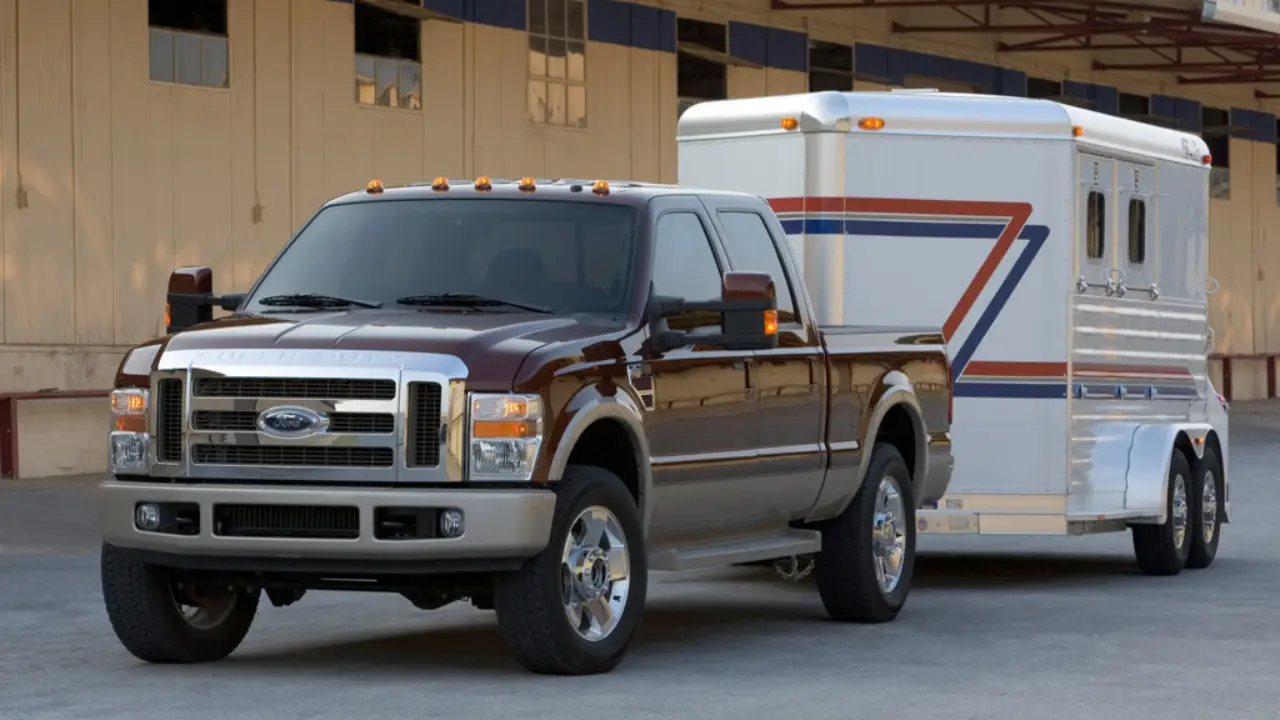
2. 2008–2010 Ford Super Duty (6.4L Power Stroke Diesel)
While diesel engines are known for being durable workhorses, the 6.4L Power Stroke found in the 2008–2010 Super Duty trucks is infamous for turning the ignition process into a high-stakes gamble.
The problems with this engine start with its overly complicated emissions system, which includes a diesel particulate filter (DPF), exhaust gas recirculation (EGR) system, and multiple sensors that all have to be in harmony for a proper ignition cycle.
When any one of these components fails, which is alarmingly frequent, it can throw the truck into limp mode, prevent proper fueling, or completely prevent startup. Many owners report long crank times, failed starts in cold weather, and repeated CEL (check engine light) appearances tied to emissions and fuel pressure issues.
The glow plug system, essential for diesel ignition in cold climates, is also prone to failure or slow response times, leaving drivers stranded on winter mornings or forced to rely on block heaters just to get the truck moving.
To make matters worse, diagnosing these issues is often beyond the scope of the average driveway mechanic. Specialized diagnostic tools are often required to isolate whether the fault lies in the high-pressure fuel pump, one of the piezoelectric injectors, or a clogged DPF choking the engine.
Even professional diesel shops sometimes struggle to pin down the source of ignition issues in the 6.4L, and repairs can quickly balloon into the thousands.
On top of that, the ignition system is intricately tied to the electronic control unit (ECU), which itself is known to be finicky. A minor voltage drop or a misread sensor signal can render the entire starting system inoperable until reset or recalibrated.
For a truck that was supposed to be a rugged, heavy-duty powerhouse, the 6.4L Power Stroke too often behaves like a fragile science project, making every start an act of faith rather than a routine experience.

3. 2011–2014 Ford F-150 (Early 3.5L EcoBoost)
When Ford introduced the 3.5L EcoBoost in the F-150, it was hailed as a revolutionary move, combining V6 fuel efficiency with V8 power. But in its early years, this engine brought along some ignition headaches that made starting consistently a serious concern for owners.
One of the most problematic issues involves intercooler condensation, where moisture accumulates in the intercooler and is drawn into the combustion chamber during startup or hard acceleration.
This results in rough starts, stumbling, hesitation, or even complete misfires. In damp or humid environments, this issue becomes even more pronounced, causing random no-start events that can’t always be replicated at the mechanic’s shop.
Owners often report that the truck cranks but fails to fire or briefly starts before sputtering out, only to run fine after sitting for a while—a maddeningly inconsistent problem.
Beyond that, early EcoBoost models suffered from coil pack degradation and rapid spark plug wear, especially if the truck was used for towing or operated under heavy load frequently. Ignition timing irregularities could trigger limp mode or severe misfiring, often leading to sensor faults that made diagnosing the actual root cause a time-consuming guessing game.
The electronic throttle body also caused trouble, as early units would stick or fail, leading to non-responsive starting and throttle input.
While many of these issues were addressed in later versions and through service bulletins, trucks from this particular window remain suspect, especially if they haven’t been meticulously maintained. Unless you have documentation proving updates and repairs were performed, early EcoBoost F-150s are more likely to give you grief than consistent morning starts.

4. 2000–2003 Ford F-150 (4.6L and 5.4L Triton V8s)
The early 2000s Ford F-150s shared many of the same problematic traits as their later 2004–2008 siblings, especially where ignition is concerned. Both the 4.6L and 5.4L Triton engines used during this time were equipped with aluminum cylinder heads that were prone to spark plug ejection—a phenomenon where plugs would literally blow out of the engine while driving or during startup.
This wasn’t just a one-off defect—it was a known design flaw that left many owners stranded, with plugs stripped from their threads and expensive head repairs or replacements needed to fix the damage. While some aftermarket solutions exist, the risk remains high for used buyers who don’t know whether the proper fixes were ever installed.
In addition, these trucks were among the first to incorporate coil-on-plug ignition systems on a widespread basis across Ford’s lineup. Unfortunately, these systems were still in their infancy and frequently failed. Misfires and starting hesitation became common complaints, especially in trucks that were exposed to moisture or poor maintenance.
Add to that poor electrical grounding and early fuel pump driver modules that were prone to corrosion and failure, and the result is a truck that can’t be trusted to start without worry. Even basic ignition switch wear became a problem in these years, with reports of worn tumblers or faulty key recognition leading to intermittent start failures.
As a whole, these trucks marked a transitional period for Ford, but not one known for consistency or peace of mind, especially when it comes to ignition reliability.
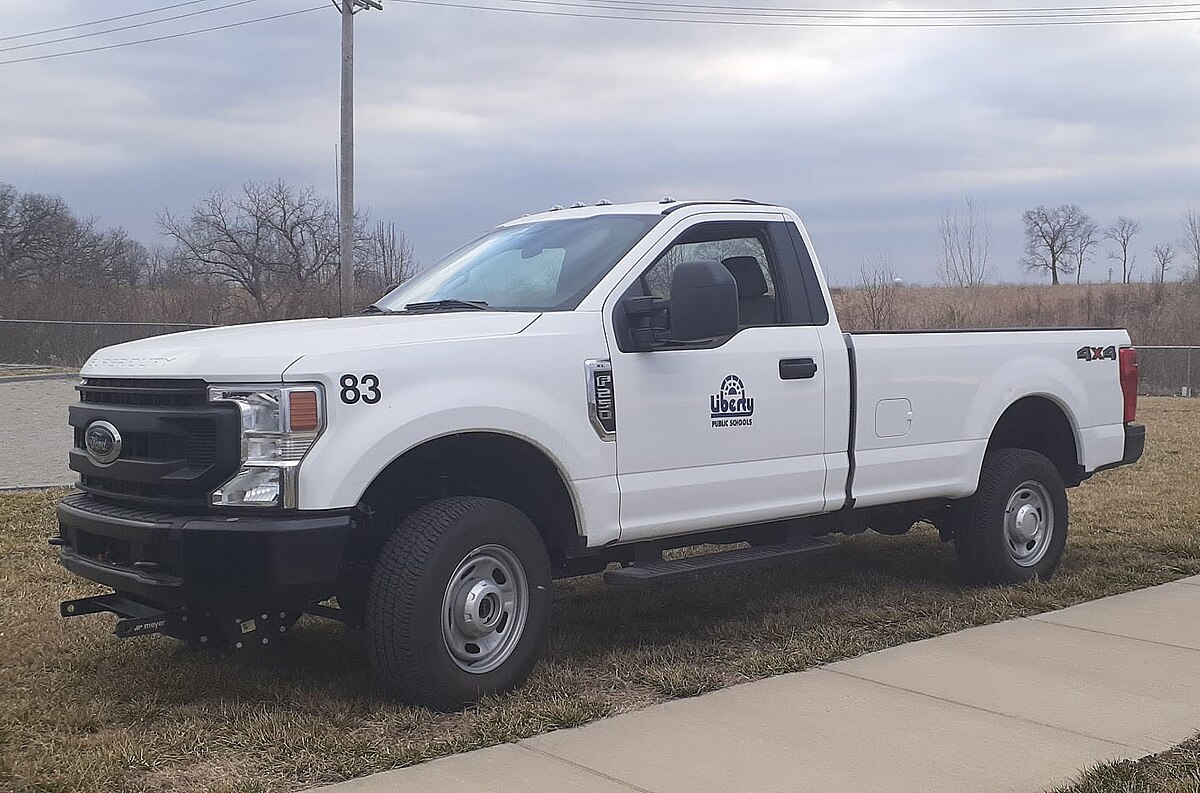
5. 2017–2020 Ford Super Duty (6.7L Power Stroke Diesel)
While the 6.7L Power Stroke engine is generally regarded as a powerful and capable diesel, its starting reliability has taken a hit in the 2017–2020 Super Duty trucks due to the increasing complexity of the ignition and fuel systems.
At the heart of the issue is the truck’s extreme dependence on a flawless series of electronic handshakes between its key fob, push-button system, engine control modules, and emissions sensors.
When all these elements work, the truck starts without complaint. But when just one part of the chain breaks down—be it a DEF sensor fault, a bad NOx sensor, or an issue with the glow plug controller—the ignition system refuses to cooperate.
Some owners report frustrating “key not detected” or “system not ready” messages even when using the original fob with a full battery. Others mention long crank times, false starts, or complete no-crank conditions tied to the vehicle’s anti-theft system or body control module glitches.
The problem is exacerbated by the increasing use of software-dependent subsystems that are incredibly sensitive to power fluctuations, temperature changes, and mileage-related sensor degradation. These trucks can run like freight trains once they’re moving—but starting them can be a gamble, especially in colder weather or after sitting unused for several days.
Battery maintenance becomes critical, but even with perfect voltage, the system sometimes refuses to initiate ignition due to sensor latency or faulty module communication.
The complexity built into these trucks, while designed for efficiency and emissions compliance, has turned what used to be a simple turn of a key into a multi-step digital handshake that can—and frequently does—fail without warning. For a work truck, this kind of uncertainty at startup is a major liability.
Also Read: 5 Gearboxes That Feel New At 150K And 5 That Grind After 50K
When it comes to trucks, there’s a universal expectation that they should just work, especially when the nameplate on the grille carries a reputation as established as Ford’s. Whether it’s hauling lumber, towing a boat, enduring a blizzard, or tackling the morning commute, starting reliability is the first promise a truck makes.
Unfortunately, as we’ve seen, not all Ford trucks are able to keep that promise. While some models stand as unshakeable pillars of reliability, others are mired in complex ignition issues, frustrating sensor failures, and a disturbing unpredictability that undermines everything a truck is supposed to stand for.
The five Ford trucks that start every time earn their stripes by doing the basics right, consistently. Whether it’s the simple brilliance of the 4.9L inline-six, the legendary durability of the 7.3L Power Stroke, or the modern dependability of the aluminum-bodied F-150s with the Coyote V8, these vehicles share key traits: mechanical integrity, accessible maintenance, and time-tested ignition systems that hold up to both age and abuse.
They don’t just run—they start without protest, season after season, mile after mile. For any used buyer, this kind of confidence is golden. It’s not just about avoiding the frustration of a no-start; it’s about trusting your vehicle to respond when you need it most, without excuses.
By contrast, the five problematic Ford trucks we’ve explored are a reminder that complexity doesn’t always equal progress. From spark plugs that weld themselves into cylinder heads to diesel systems choked by emissions equipment, these trucks may have been born with good intentions, but often end up delivering headaches instead of horsepower.
Even models with otherwise solid drivetrains can be undermined by flawed ignition designs, overly sensitive electronics, or high-maintenance components that fail before their time.
The damage isn’t just mechanical—it’s financial and emotional, too. Towing fees, shop visits, days off work, and the slow drip of lost trust add up until even the most beautiful truck becomes a burden.
That’s why understanding the ignition landscape—what starts, what stalls, and what fails—is critical in today’s used market. It’s not enough to judge a truck by its trim level, towing capacity, or resale value.
You need to know how it behaves when it matters most—that first crank of the key or push of the button. The best trucks prove themselves in that moment. The worst ones leave you stranded.
In the end, Ford remains a titan in the truck world, and many of its models rightly earn their place on America’s roads. But even titans have weak spots.
This list isn’t about brand loyalty—it’s about buyer empowerment. Know what to avoid. Know what to trust. And above all, don’t let a good-looking truck fool you into thinking it will be a good-starting truck. When in doubt, turn the key—and listen.

